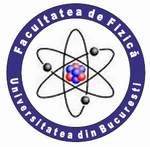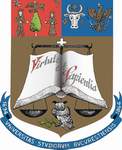| |
 |
UNIVERSITY OF BUCHAREST
FACULTY OF PHYSICS Guest
2025-10-06 0:44 |
 |
|
|
|
Conference: Bucharest University Faculty of Physics 2025 Meeting
Section: Polymer Physics
Title:
Piezoelectric Materials for Generating Renewable Electricity
Authors:
Irinela CHILIBON (1), Ileana Cristina VASILIU (1), Ana Maria IORDACHE (1), Stefan Marian IORDACHE (1), Bogdan BITA (1,2), Ana Maria FLOREA (1,2), Stefan CARAMIZOIU (1,2)
*
Affiliation:
1) Optospintronics Department, National Institute of Research and Development for Optoelectronics - INOE 2000, 409 Atomistilor, 077125, Magurele, Romania
2)Department of Electricity, Solid-State Physics and Biophysics, Faculty of Physics, University of Bucharest, 11405 Atomistilor, 077125, Magurele, Romania
E-mail
chilib@inoe.ro
Keywords:
piezoelectric, renewable electricity, harvesting
Abstract:
Energy harvesting is an attractive concept because so many energy sources such as light, heat, and mechanical vibration that exist in our ambient living could be converted into usable electricity.
Piezoelectric materials have applications in generating renewable electricity. Several techniques have been proposed and developed to extract energy from the environment. The most common available sources of energy are: wind, solar, temperature and stress. Energy harvesting (EH) is an attractive concept because so many energy sources such as light, heat, and mechanical vibration that exist in our ambient living could be converted into usable electricity. The process of energy conversion in a piezoelectric material is based on the principle of the direct piezoelectric effect. A piezoelectric element which is mechanically stressed generates electrical charges.
Generally, vibration energy could be converted into electrical energy using one of three techniques: electrostatic charge, magnetic fields, and piezoelectric materials. Piezoelectric generators are appropriate to convert the smallest mechanical deformations directly into electrical energy. It needs to find other methods and possible ways of using energy sources such as mechanical energy converted into electrical energy.
Emerging trends in the (EH) future include advanced materials like: piezoelectric materials generating electricity when stressed and thermoelectric systems converting heat into electricity. Piezoelectric materials, usually crystals or ceramics, have the capability to generate a small amount of current, when they are subjected to mechanical pressure, such as pushing, bending, twisting, and turning. Several such materials, placed near each other could increase the electrical energy.
The last years have seen the birth of many new types of piezoelectric materials or transducers (PZT, PT, PVDF, piezoceramic/polymer composites, Macro Fiber Composite - MFC, etc.).
Markets and applications to be tapped by indoor photovoltaics for light harvesting are huge, ranging from building-integrated elements to consumer products, biomedical devices, wireless sensors and communication technologies.
References:
[1] Kapil Bhatt, Sanjay Kumar, Sandeep Kumar, Sandeep Sharma, Vedant Singh, A review on energy harvesting technologies: Comparison between non-conventional and conceptual approaches, Energy Reports, Volume 12, December 2024, Pages 4717-4740 https://doi.org/10.1016/j.egyr.2024.10.019
[2]Abhisek Chakraborty, Giulia Lucarelli, Jie Xu, Zeynab Skafi, Sergio Castro-Hermosa, A.B. Kaveramma, R. Geetha Balakrishna, Thomas M. Brown, Review: Photovoltaics for indoor energy harvesting, Nano Energy, Volume 128, Part B, September 2024, 109932
Acknowledgement:
The authors’ work was supported by the CORE Program, carried out with the support of MCID, project no. PN 23 05.
|
|
|
|

